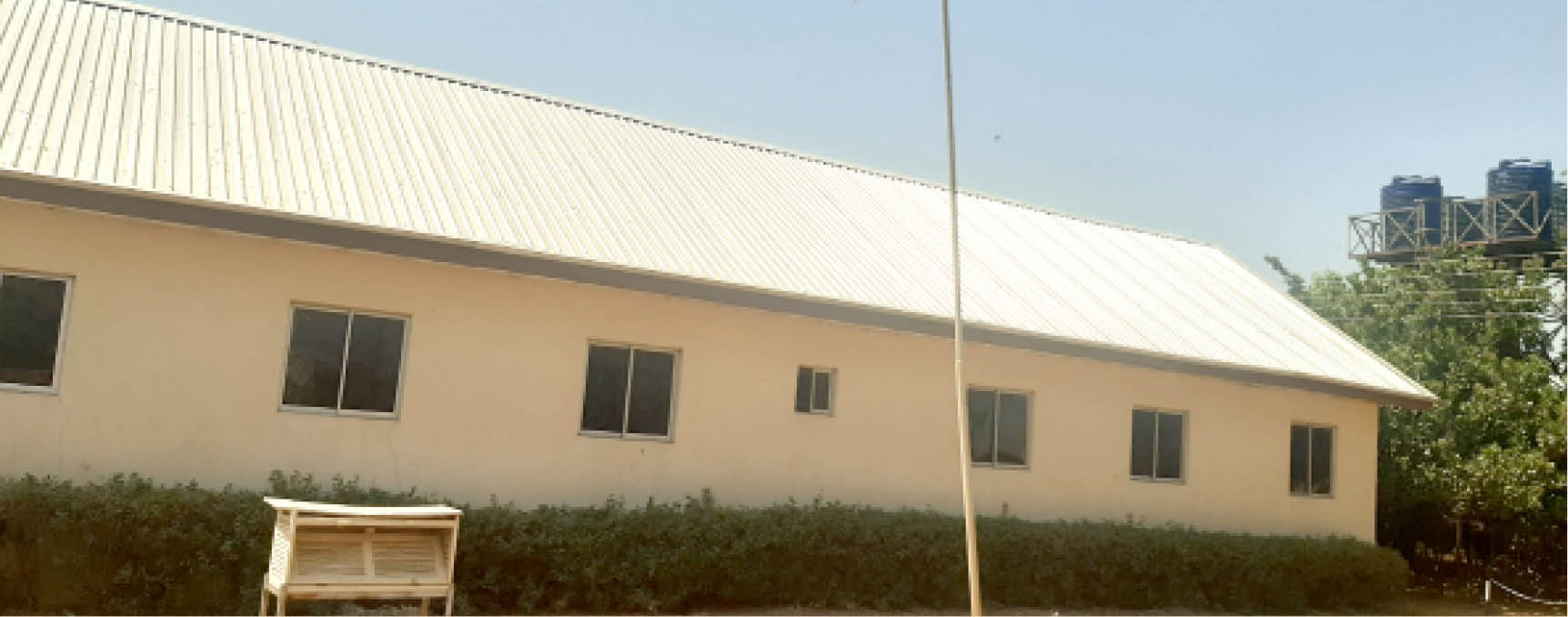How weather systems affect learning in schools
More often than not, using text books, static charts and data obtained from obsolete sources to teach physical and environmental sciences discourages students from learning, unlike practical activities which engage students and help them to appreciate the processes of scientific investigations. This explains why schools install weather stations with instruments in their premises where information […]

Wind vane at a weather station in ETF Community Education Resource Centre, Gombe
More often than not, using text books, static charts and data obtained from obsolete sources to teach physical and environmental sciences discourages students from learning, unlike practical activities which engage students and help them to appreciate the processes of scientific investigations.
This explains why schools install weather stations with instruments in their premises where information is collected about weather conditions. Some of the instruments commonly found at the stations include anemometer, wind vane, thermometer, hygrometer, barometer, rain gauge and solar radiation sensor. Modern stations are connected to the internet and data could be shared to a number of beneficiaries.
Ironically, many of these weather stations in basic and senior secondary schools are reportedly disappearing gradually, partly due to the poor maintenance culture and partly due to the activities of vandals.
The majority of the stations which were earlier found in secondary schools have helped students to study atmospheric conditions.
Investigation has revealed that most of the stations in public schools in Gombe State are either damaged or not existing at all, a situation that is said to be affecting effective interactive teaching activities as well as students’ performance in class tests and even external exams.
In the interim, in the few schools visited where the stations were still available, the measuring instruments were somewhat out of order or old-fashioned; thus, students there were only shown instruments during class activities without the knowledge of how they actually work.
It was reliably gathered that during external examinations, most of the schools, especially in the Gombe metropolis, relied on a weather station at the ETF Community Education Resource Centre.
Some teachers who spoke to Daily Trust said weather stations at schools gave students practical learning opportunity about the weather and climate, after studying the theoretical aspects.
A Geography teacher at Government Science Secondary School II, Gombe, Malam Muhammad Adamu Muhammad, said although at the secondary school level the stations were not used for research purposes, they helped the students understand better what they were taught while in class.
He added that the weather stations also played vital role during practical examination for Geography and other subjects, mostly the Senior Secondary Certificate Examination (SSCE) and the West African Senior School Certificate Examination (WASSCE).
Malam Muhammad explained that the unavailability of the weather stations had affected the overall performance of students during class examinations.
“The lack of such stations is affecting students’ general performance during national examinations, because they only know the theoretical aspect. As such, it would definitely affect them during such examinations,” he said.
According to him, even in the schools, where the weather instruments were available, teachers found it difficult to teach the students effectively because of classroom overcrowding.
On the other hand, Gombe State Government said it was working to revive weather stations in public secondary schools to improve students’ learning process, specifically in science subjects, and enhance their performances in examinations.
Commissioner of Education, Dr Habu Dahiru, disclosed this to Daily Trust while commenting on the lack and deterioration of the weather stations in most public secondary schools in the state.
Dr Dahiru said the ministry is aware of the absence of such vital weather facilities that should be an integral part of secondary schools.
He said one of the reasons was that school infrastructure and relevant teaching and learning materials were either not provided, or left to rot due to poor supervision by successive administrations.
“Since my appointment few months ago, I have embarked on returning such vital tools and other school routines for effective teaching and learning to take place in our public schools.
“We have observed the unfortunate destruction and disappearance of such important tools, which obviously have negative effect on the schools as well as their students. But we are working round the clock to fix these problems, and very soon, we will restore all these school routines which were deliberately abandored by the past administration.” he said.
Dr Dahiru said that the ministry has also revived the conduct of afternoon and evening preps in boarding schools which abandoned for many years, adding that “we are also looking at the issue of teacher to student ratio which we observe is also affecting smooth teaching and learning, especially for subjects that involve practical aspects like Geography.”
